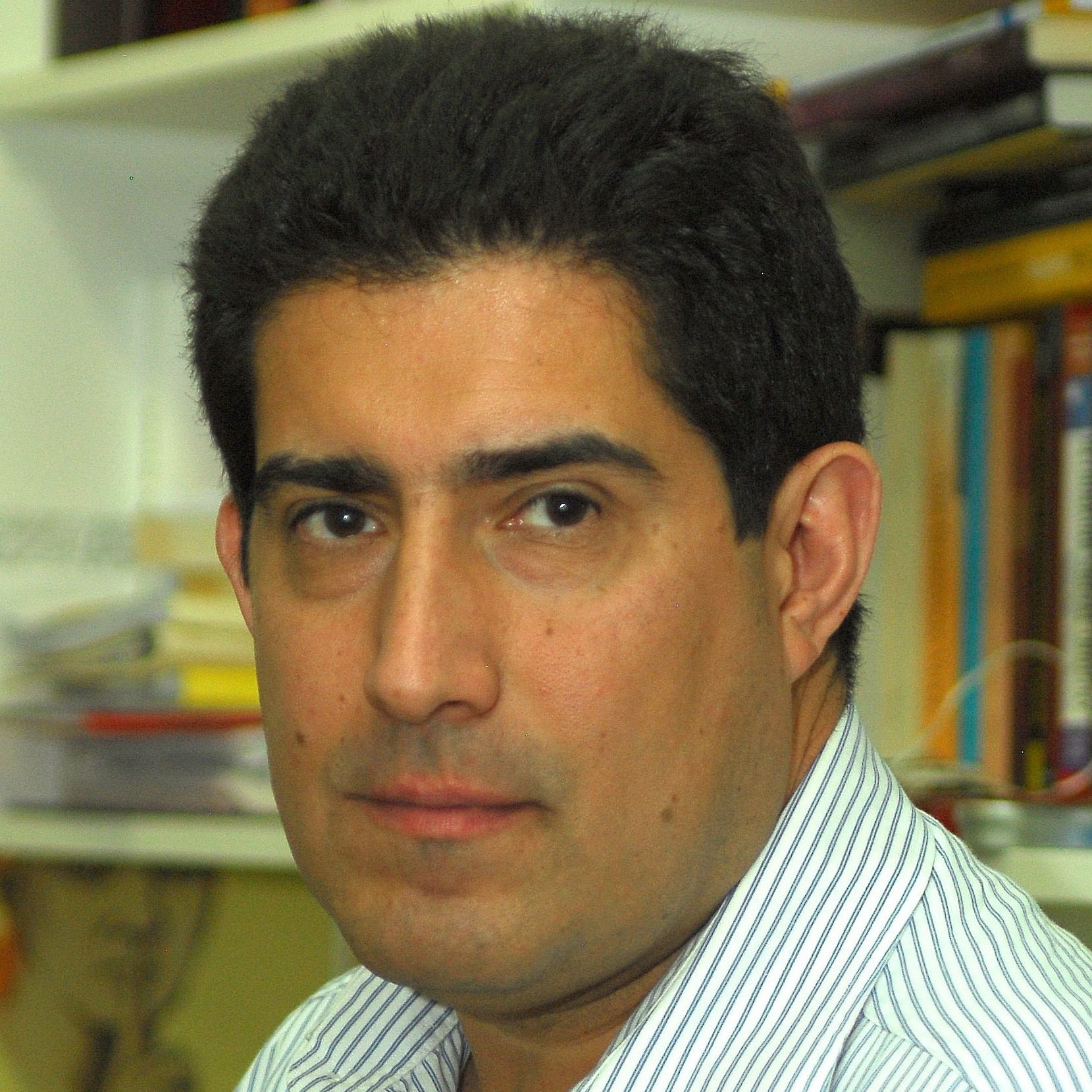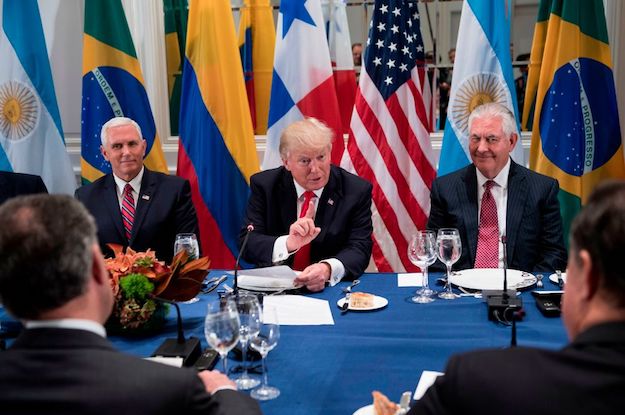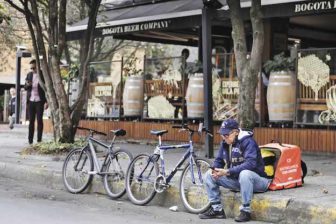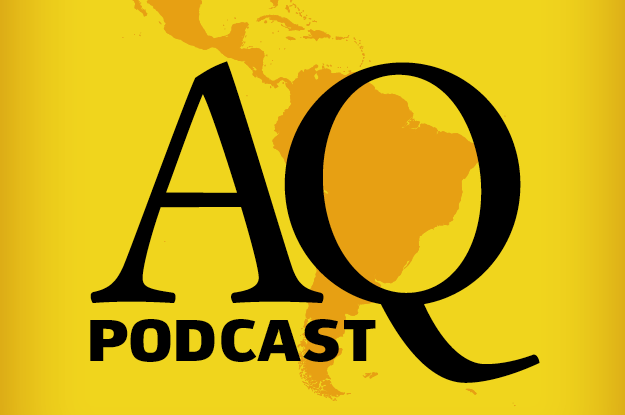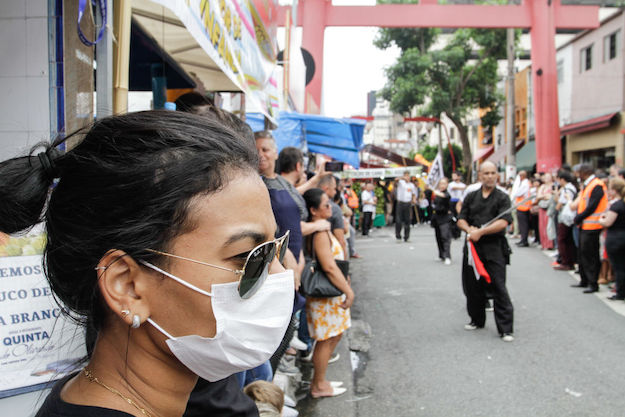When the leaders of the Western Hemisphere meet in Lima from April 13-14 for the 8th Summit of the Americas, the gathering will likely lack the optimistic tone of previous meetings. Past summits were full of ambition and a sense that the leaders assembled could usher in a new era of cooperation in the region. Now, with few exceptions, the heads of state that will attend are either on their way out of office, struggling with low approval ratings and/or lacking a popular mandate. Few believe they can achieve much in Lima.
To be sure, the shine has come off the Summit of the Americas in stages. In the first few sessions, promoting free markets was a dominant theme. But after the election of Hugo Chávez in Venezuela in 1998, that agenda came off track. In recent years, as Latin American leaders pushed for non-democratic Cuba to be included in the gathering, the promotion of representative democracy was also relegated to the back burner. Though the official agenda will continue to promote free trade and democracy, both are now far less popular talking points in the region than they were 20 years ago.
Even so, this year’s summit is shaping up to be a new low, thanks both to the recent change in leadership in the United States and the current lack of leadership in much of Latin America.
Since taking office in January 2017, President Donald Trump has made six foreign trips, compared to the 11 former President Barack Obama made at a comparable stage in his presidency. None of Trump’s trips has so far been to Latin America. Even now, it’s hard to be certain what Trump hopes to gain by showing up – assuming he follows through on plans to attend.
Trump’s visit will make plain that the White House does not really have anything close to a comprehensive agenda for U.S.-Latin American relations. Trump’s policy toward the region has so far consisted of going back and forth on the renegotiation of NAFTA, promising harsher policies toward Cuba without delivering anything substantial, and talking tough on Venezuela without doing all that much to back up his words.
So why go? Trump may have decided to attend after he met Pedro Pablo Kuczynski, when the now-former president of Peru visited Washington in February 2017. The two reportedly enjoyed a positive rapport. Now that Kuczynski has resigned in the wake of corruption allegations, Trump has lost a potential partner. The new Peruvian president, Martín Vizcarra, may not get along as well with Trump. Unlike Kuczynski, Vizcarra has not lived in the United States, does not speak English fluently and, most importantly, tends to dislike the kind of pomposity Trump is famous for.
Another possibility is that Trump wants to travel to Lima to please his far-right electoral base. He may relish an opportunity in the region to criticize Mexico’s President Enrique Peña Nieto and lash out at Central American leaders over immigration flows. If Trump’s aim is primarily to burnish his image at home, the summit may result in plenty of anecdotes and flashy headlines, but little else.
Trump might also want to go to Lima to put pressure on Latin American countries to join a common force to push for democratic change in Venezuela. But having failed to invest in the necessary groundwork before the summit – in over a year, he has not appointed anyone to lead the Western Hemisphere Bureau in the State Department – it is unlikely that Trump will be able to turn the meeting into an opportunity to bring about much needed change.
To be fair, the Obama administration similarly spent too little time fashioning a comprehensive approach to Latin America. Other than thawing relations with Cuba, the Obama years made little progress in strengthening relations between the U.S. and Latin America and moving discussions forward to 21st century issues, like technological modernization, rising health care and pension costs, and trade integration beyond goods and services.
But even so, Trump appears far less interested in cooperation in the Americas than his predecessor. Unlike Obama, who visited Mexico twice in his first year in office, Trump has canceled at least two scheduled meetings with Peña Nieto. Add to that a U.S. State Department led by an acting secretary of state and the Bureau of Western Hemisphere Affairs led by an acting assistant secretary, and it is easy to see how the 2018 Lima Summit could turn out to be yet another wasted opportunity for the U.S. government to find common ground with Latin American democracies.
The current mood in Latin America does not inspire much more optimism for the prospects of the summit. The theme of this year’s gathering is the fight against corruption. But coming on the heels of Kuczynski’s corruption-related resignation and the fact that several other Latin American leaders are under investigation for graft (not to mention the shadow of Robert Mueller’s investigation into Russian meddling in the 2016 election in the U.S.), any meaningful discussion about fighting corruption seems unlikely.
Adding to the sensation that this summit will offer little in the way of substance is the fact that several marquee attendees will soon be lame ducks. The leaders of Mexico, Brazil and Colombia, the three most populous countries in Latin America, are in the final stretch of their terms. They are all suffering record low presidential approval rates in their last months in office. Paraguay’s President Horacio Cartes is also on his way out. Even Raúl Castro, the 86-year old leader of Cuba, will be stepping down a few days after the summit. Venezuela’s Nicolás Maduro – who had his invitation withdrawn – will lose little by missing a meeting in a country in which he is extremely unpopular.
Of course, there are exceptions: Argentine President Mauricio Macri and the recently inaugurated president of Chile, Sebastián Piñera, can credibly advocate for democracy and free trade. Lenín Moreno, the recently elected president of Ecuador, broke with his left-wing predecessor and is timidly pushing some market friendly reforms. But just like a high school reunion that nobody was looking forward to, the Lima Summit of the Americas is likely one that most leaders in the region just want to get over with.
—
Navia is a contributing columnist for Americas Quarterly, professor of liberal studies at NYU and professor of political science at Diego Portales University in Chile.

